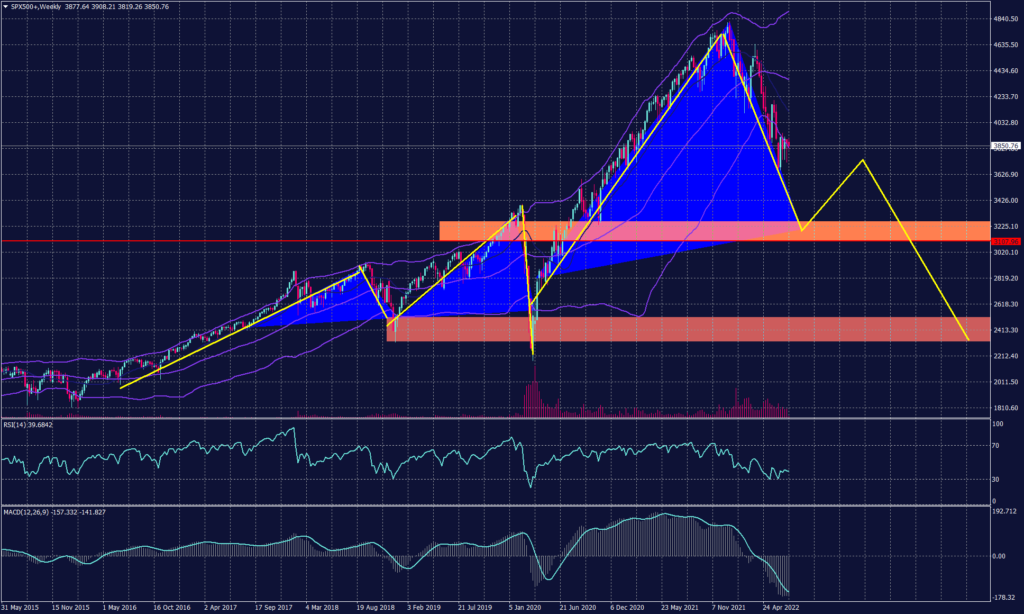The Flagship Anticipates The Crisis




Those who have tracked the S&P 500 trend over the past 70 years would’ve noticed a cycle – S&P 500 hits a new high, the Fed intervenes, inflation booms, S&P 500 crashes, and then we find ourselves in the middle of a crisis.
The First 20 Years: The Great Depression
The S&P 500 was initiated in 1957, at 386.36 points. Throughout its first decade, the value of the index rose to almost double, signifying the economic blast that followed World War II and reaching near 700 points. Over the next decade, the Fed eased its fiscal policy to push economic growth. But as a result, the S&P 500 dipped by more than 50% to under 300 points and the Great Depression began—the worst economic downturn in the 20th century since World War II. Therefore, the S&P 500 shed another 20% during the time between 1981 through 1982 to 111.59 points.
The second big hit: The Tech bubble
It took nearly 30 years of economic recovery and technological inventions to encourage Tech companies to shine. In 2000, the stock market faced the Tech bubble or so-called Overvaluation Bubble. This era was marked by overvaluations, increasing popularity of equity trading, and a heavy focus on Tech shares—back then you could watch equity news in your neighbourhood grocery shop or even discuss it with your cab driver. When the bubble burst in 2002, the new-born index NASDAQ dipped almost 90%, while 40% of S&P 500 value vanished, moreover the majority of common traders’ wealth.
Without warning: The Great Recession
Eventually, the S&P 500 recovered reaching new highs in 2007 stoked by the increase in housing, financial sector growth, and gaining commodity stocks. However, in 2008, the majority of these gains were repealed after a decline in housing prices and increasing numbers of housing loans defaults. The country-wide debt defaults created an environment of intense fear, and distrust of equities as a sound investment. The S&P 500 fell 57.7% recording its largest drop in history. Starting at its high of 1,576.09 in October 2007 bottoming out in 2009 at 666.79 points during what has come to be known as the Great Recession.
Nowadays: Current events in the same old order
Look at the current year; S&P 500 hit new all-time high early and started falling, central banks planning for rate hikes, and commodities prices are going rocket high.
Are we running into the same wheel? Will S&P 500 lose more of its value? When? And to what extent?
Recent Posts
新中東股票產品上架
尊敬的客戶: 我們很高興地宣佈,STARTRADER 將於2025年3月24日推出新的中東股票產品。這些產品旨在幫助客戶實現投資多元化,並將專屬上線於 MT5 平台。 請參閱下表瞭解新產品的詳細資訊: 產品代碼 說明 合約規模 3日庫存費 交易時間 ADNOCDIST 阿布達比國家石油分銷股份公司 10 星期五…
重要通知:Live1 和 Live2 伺服器上美分帳戶的歷史數據壓縮
尊敬的客戶, 為了提升您的交易體驗,我們將對 MT4 Live 1 伺服器(STARTRADERINTL-Live)和 Live 2 伺服器(STARTRADERINTL-Live2) 上的所有美分帳戶進行歷史數據壓縮。此操作計劃於 2025 年 3 月…
重要通知:STARTRADER 即將進行伺服器升級
尊敬的客戶, 我們很高興地通知您,STARTRADER 將進行伺服器升級,以提供更優質的交易體驗。 升级时间: 日期:2025年3月22日(星期六)時間:00:00 - 23:59(GMT+3) 重要訊息: 在伺服器升級期間,MT4 和 MT5 賬戶的訪問將暫時不可用,請注意以下影響: 1. 交易暫停: 升級期間將無法執行任何訂單。 2.…
3月期貨展期通知
尊敬的客戶: 您好,我司期貨產品三月份的展期將至,因新舊期貨合約之間存在價格差異,為規避潛在的交易風險,建議客戶妥善控制倉位。 期貨合約的展期時間如下: 產品代號 產品名稱 展期日 JPN225ft Japan 225 Index Future日經指數(期貨) 2025-03-12 VIX Volatility恐慌指數期貨 2025-03-13…
美國夏令時交易時間調整
尊敬的客戶: 您好,由於美國夏令時間即將到來,STARTRADER部分產品交易時間由2025年3月9日起將有所調整。 請參考下表瞭解涉及調整的產品情況: 產品代號 交易時間 Cocoa美國可可豆現貨 星期一~星期五: 12:45-20:30 Coffee阿拉比卡咖啡豆現貨 星期一~星期五: 12:15-20:30 Sugar11號精糖現貨 星期一~星期五: 11:30-20:00 Gasoil輕質低硫原油現貨…
客戶中心升級公告
尊敬的客戶: 為提升您的使用體驗,STARTRADER星邁客戶中心將于平臺時間(GMT+2)2025年3月8日03:00開始進行客戶中心升級並於當日內完成,期間您將無法訪問網頁端及APP端的客戶中心,升級完成後您將享受更佳體驗。感謝您的理解與支援,預祝您交易愉快!


